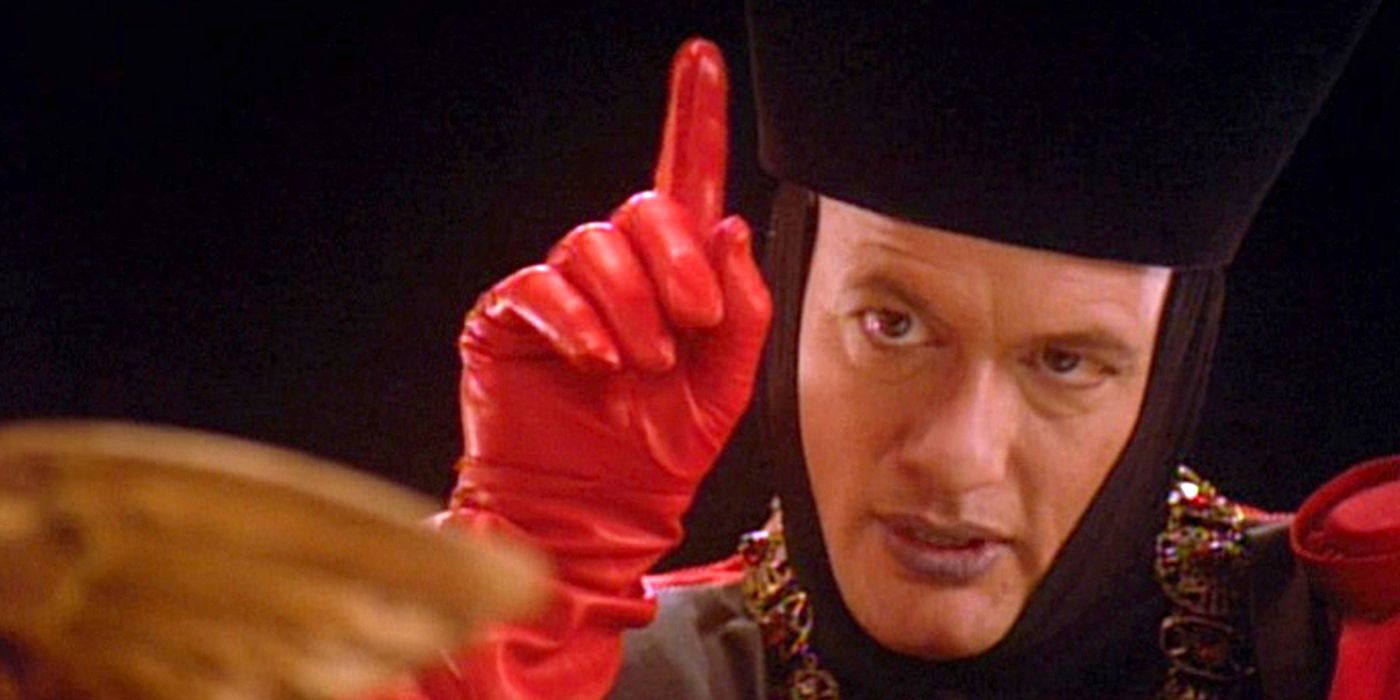In the late 1970s, Gene Roddenberry and Paramount wanted to bring Star Trek back either as a movie or a new series. Ten years later, they did both at the same time. In a bit of unintentional synergy, Star Trek V: The Final Frontier featured a villain who might be tied to Q, a powerful alien in The Next Generation pilot. Though, the stories were written wholly independent of the other.When Star Trek: The Original Series was canceled, the show only grew in popularity on syndication. Ultimately, Paramount and Roddenberry decided to relaunch the series with the old cast and some new additions. However, Star Trek: The Motion Picture happened instead. Roddenberry was never one to waste an idea, he took the Star Trek: Phase II leftovers to create TNG. The pilot episode, the alien portion of “Encounter at Farpoint,” was written by legendary Trek writer Dorothy “D.C.” Fontana. The network wanted a two-hour pilot, so Roddenberry wrote the portions dealing with the creature known as Q. He often wanted to pit his crews against aliens with god-like powers. However, since he had nothing to do with the story, he hated Star Trek V for its similar plot. Much to the dismay of fans who feel similarly about The Final Frontier, it is as much “canon” as anything else. Yet, it could explain why Q eventually showed up as he did, very cross with humanity.William Shatner and his writing and production partners devised the story for The Final Frontier based on the then-popular televangelists. Spock’s brother Sybok is a stand-in for these religious charlatans. However, he’s more sympathetic because there is actually a “God” beyond the “Galactic Barrier.” However, instead of the divine creator of the universe, it was actually an alien entity imprisoned eons ago. Still, even trapped on the planet, the being can change its form and use its power as a destructive force. Q’s powers are much more dynamic, though even he isn’t without his limits.RELATED: William Shatner Almost Radically Changed Enterprise’s Final Season
In the late 1970s, Gene Roddenberry and Paramount wanted to bring Star Trek back either as a movie or a new series. Ten years later, they did both at the same time. In a bit of unintentional synergy, Star Trek V: The Final Frontier featured a villain who might be tied to Q, a powerful alien in The Next Generation pilot. Though, the stories were written wholly independent of the other.
When Star Trek: The Original Series was canceled, the show only grew in popularity on syndication. Ultimately, Paramount and Roddenberry decided to relaunch the series with the old cast and some new additions. However, Star Trek: The Motion Picture happened instead. Roddenberry was never one to waste an idea, he took the Star Trek: Phase II leftovers to create TNG. The pilot episode, the alien portion of “Encounter at Farpoint,” was written by legendary Trek writer Dorothy “D.C.” Fontana. The network wanted a two-hour pilot, so Roddenberry wrote the portions dealing with the creature known as Q. He often wanted to pit his crews against aliens with god-like powers. However, since he had nothing to do with the story, he hated Star Trek V for its similar plot. Much to the dismay of fans who feel similarly about The Final Frontier, it is as much “canon” as anything else. Yet, it could explain why Q eventually showed up as he did, very cross with humanity.
William Shatner and his writing and production partners devised the story for The Final Frontier based on the then-popular televangelists. Spock’s brother Sybok is a stand-in for these religious charlatans. However, he’s more sympathetic because there is actually a “God” beyond the “Galactic Barrier.” However, instead of the divine creator of the universe, it was actually an alien entity imprisoned eons ago. Still, even trapped on the planet, the being can change its form and use its power as a destructive force. Q’s powers are much more dynamic, though even he isn’t without his limits.
#Star #Trek #Theory #Final #Frontiers #Villain #Powerful #Alien #Species
Note:- (Not all news on the site expresses the point of view of the site, but we transmit this news automatically and translate it through programmatic technology on the site and not from a human editor. The content is auto-generated from a syndicated feed.))



